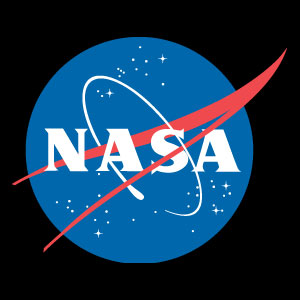
Earlier this week NASA began to tease us with tantalizing hints regarding a major announcement, and the interwebs began buzzing with the possibilities. The safe money was on the possible world changing announcement that the Cassini-Huygens spacecraft– which is currently sending back massive amounts of data from Saturn—had confirmed the existence of microscopic life on Saturn’s moon Rhea. If that were the case, it would be the first example of extra-terrestrial life, and the scientific world would never be the same! But that wasn’t it.
The dark horse bet was on NASA making some form of announcement following the mysterious X-37B mini space shuttle that was launched by the military and has been orbiting the Earth unmanned for the past seven months. The exact nature of its mission is unknown, which had some believing that when the X-37B lands on December 6 (weather permitting), it might herald the announcement of something on the horizon regarding the next generation of space travel. Perhaps the press conference would be to debut the secret, and previously unseen new spacecraft that will return us to the stars! Not so much.
As the world held its breath, anticipating the moment when NASA would bring out buckets to offer the audience a place to let their recently blown minds dribble out of their ears, the accumulated five person panel discussed a new finding of epic proportions. Alien life has been discovered! Sort of.
NASA has announced that it has found alien life! In a lake in California.
The announcement was in regards to the discovery of a new organism that is so different in its makeup that it can realistically be considered alien, just not extra-terrestrial. The discovery occurred in Mono Lake, California, in an area that contains a very high concentration of arsenic in levels considered too harsh to nurture life, and poisonous to man. The organism accepts arsenic in its makeup instead of phosphorus, and the DNA found is considered totally foreign to all other life on Earth.
While the discovery in itself is important to the advancement of science, what it signifies is much more important. The current consensus from scientists has typically been that if and when life is discovered in space, it will be on a planet that is in some ways similar to Earth. The life might be fundamentally different, but certain similarities must be present– such as the distance of the planet from its star to allow temperatures that are neither freezing nor boiling, a particular level of oxygen and carbon dioxide in the atmosphere, and some form of water. The discovery today renders all of those truths false, and opens up the idea that life may exist in places that have been overlooked as too toxic for life to exist.
So while the announcement may not have been as “sexy” as many people thought, and the implications might not be felt in our lifetimes, the very nature of this organism challenges the beliefs that we have held as certainties. Life can exist in alien environments, and it may be completely different from anything ever dreamed of.
[Update: Just to clarify, as one of our readers pointed out, the reason NASA is considering this a “major” discovery is that this organism is the first, and only organism ever found to not have phosphorous in its makeup. From a scientific standpoint it is a significant discovery.]


